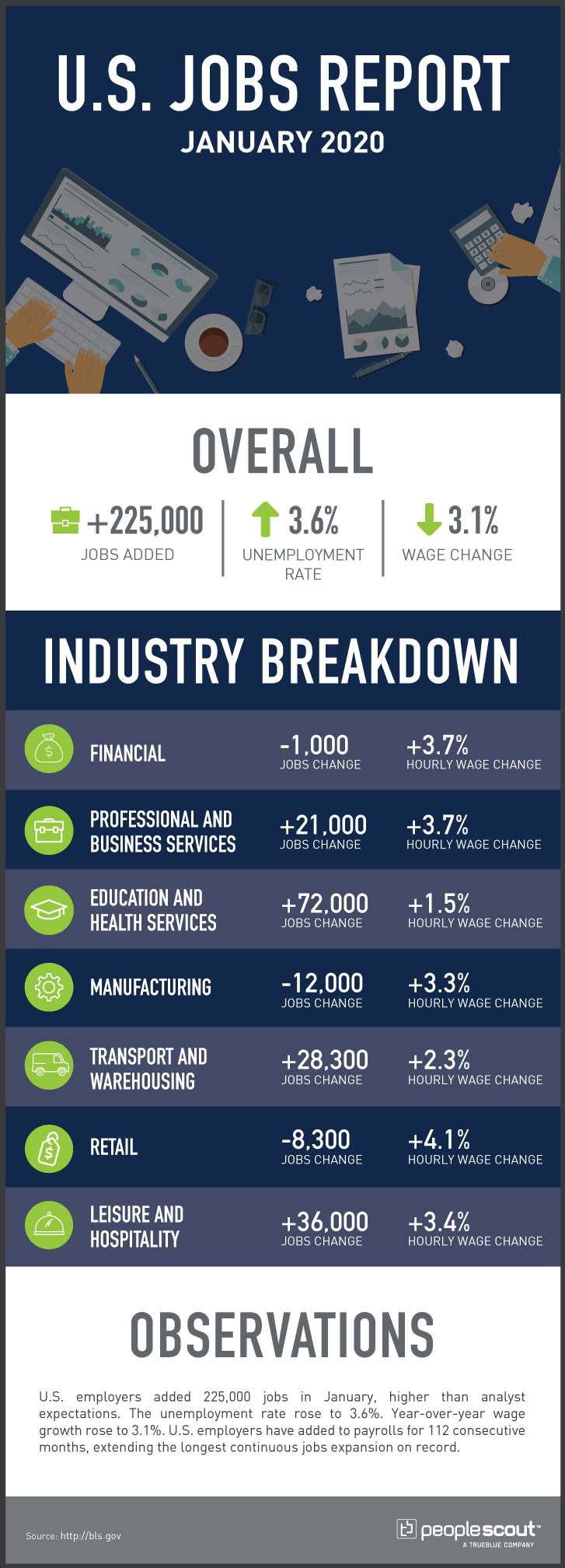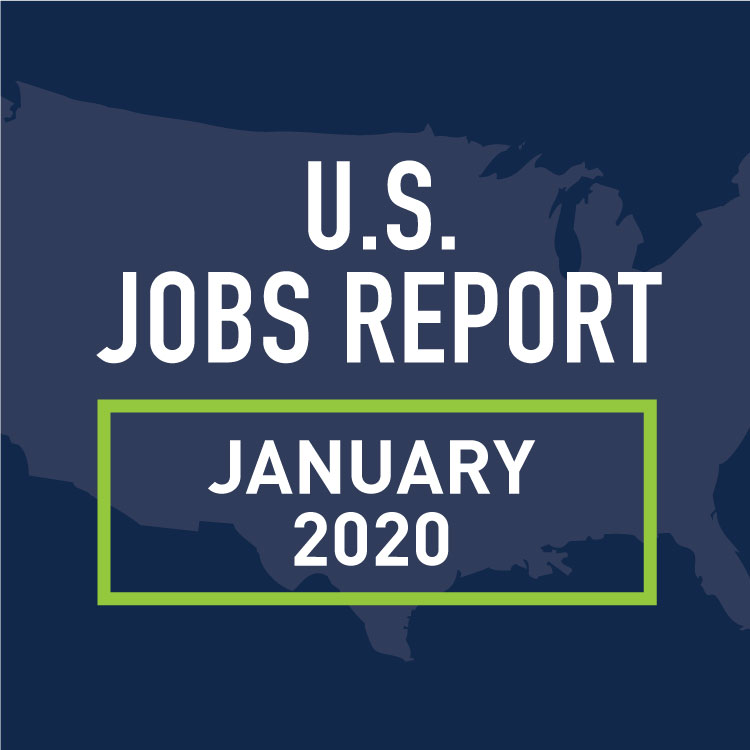The Labor Department released its January 2020 jobs report which shows that U.S. employers added 225,000 jobs in January, which beat analyst expectations. The unemployment rose to 3.6%. The labor force participation rate rose to 63.4%. Year-over-year wage growth increased to 3.1%. U.S. employers have now added to the payrolls for 112 straight months, extending the longest continuous jobs expansion on record.

The Numbers
225,000: The economy added 225,000 jobs in January.
3.6%: The unemployment rate rose to 3.6%.
3.1%: Average hourly wages increased at a rate of 3.1% over the last year.
The Good
The overall jobs numbers for January look strong. The 225,000 jobs added to the economy beat analyst expectations of just 160,000 in the first month of 2020, according to CNN. The growth was strongest in construction, healthcare and transportation and warehousing. Some of that increase could be attributed to a warmer than average January.
While an increasing unemployment rate can sometimes be seen as a downside, in this report, it demonstrates that more sidelined workers are being pulled into a strong economy. The Washington Post reports that the labor participation rate hit a seven-year high of 63.4%.
The Bad
The strong hiring numbers in January didn’t apply across all industries. Manufacturing continued to lose jobs. Marketwatch reports that those losses were caused by the trade war with China. Jobs in retail also dropped.
Additionally, the January report included a few revisions that decreased the number of jobs created in 2019. The overall employment level for March 2019 was decreased by 514,000 jobs. For all of 2019, the number of jobs added to the economy fell by 12,000 to 2.096 million jobs.
The Unknown
Despite strong job growth, the yearly wage growth remains lower than expected. The Wall Street Journal reports that the growing number of people reentering the workforce could be a factor in keeping the rate of wage growth from increasing more quickly. However, the cause of the persistently sluggish wage growth has been debated by economists for the past couple of years.
It is also still unclear what impact the coronavirus will have on U.S. jobs numbers. The easing of the trade war with China was expected to relieve some of the strain on the manufacturing industry. However, increasing concern about the virus could impact that. The data used for the January report was collected before news about the spread of the virus.



